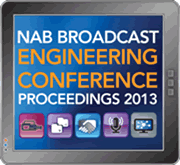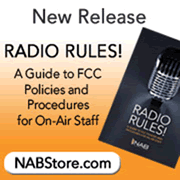|
|

|
FCC CONSIDERS CHANGES TO THE RF EXPOSURE REGULATIONS
The Further NPRM states that the FCC has, over the years, found inconsistent signage at various fixed transmitting facilities. In order to provide clear guidance on how licenses should restrict access to areas near fixed transmitter facilities, the FCC now proposes to require a detailed multi-level signage program that is based on the environmental categories and guidance provided in IEEE Standard C95.7-2005. While this type of type of signage program has become common place in the industry, it has never been “required” by the FCC before and may require stations to re-evaluate the RF environments around their transmitter facilities in order to access the impact of this proposed new requirement. Also in the Further NPRM, the Commission seeks to clarify the applicability of “transient exposure” and how to apply its exposure limits in controlled environments with respect to averaging time near fixed transmitter sites. Since 1996, the FCC Rules allow for occupational exposure levels to apply to individuals that are transiently exposed if they are made aware of their exposure, even though the exposure is not a consequence of their employment. This allows for facilities that are near public areas such as parking lots, parks, etc. to be deemed in compliance because the persons in that area are only there for short period of time (i.e. transient) and therefore are subject to the controlled environment limits and not the general public limits. The FCC proposed to add a time averaging metric to the concept of transient exposure that indicates transient exposure should not exceed the general population limit considering 30-minute time averaging in a controlled environment. Again, stations may need to assess the environment around their transmitter site in order to understand the impact of this proposed rule change. In the NOI, the Commission has initiated a new proceeding to determine whether there is a need for reassessment of the Commission overall RF exposure limits and policies. The NOI acknowledges the research that has occurred in recent years and the changing nature of RF devices and their uses, and focuses on the propriety of the Commission's existing standards and policies, including its fundamental RF exposure guidelines and aspects of its equipment authorization process and policies as they relate to RF exposure in light of changes since the Rules were originally adopted. Also in the NOI, the FCC wants information on how to protect the public from injury due to contact currents. The NOI stated that contact currents can be a safety issue in the vicinity of AM broadcast facilities. Specifically, the Commission requests comment on an appropriate strategy to promote awareness for construction and maintenance project contractors and planners where the potential for contact RF burns, whether serious or minor, could occur. For example, would it be beneficial for the Commission to provide publicly available maps showing areas where electric fields exceed 10 V/m from AM broadcast stations? If so, the Commission invites comment as to whether AM broadcast stations currently have this information and, if not, to explain the impact of collecting this information and making it available to the Commission. How much time should be required to do so and what would be the costs and benefits? The Commission seeks comment on whether the cost of dealing with potential AM burn hazards as they arise should be the responsibility of the station, the affected party, or both. The FCC also seeks comment as to whether it is the appropriate body to address this issue. While contact burns are a universally recognized hazard of variable severity, adoption of numerical limits on contact RF currents over a broad frequency range may not be effective in avoiding situations where burns actually occur. The Commission requests comment on the feasibility, efficacy and burden of contact current limits versus other, perhaps informational, approaches such as mapping. Comments must be filed on or before September 3, 2013, and reply comments must be filed on or before November 1, 2013. |
|
|
2013 Broadcast
Engineering Conference Proceedings The just released 2013 BEC Proceedings feature select technical papers on the most recent developments in broadcast technology. Important topics covered include: IP for Television and Radio, Next Generation Television Broadcasting, Audience Measurement Technologies and AM Band Revitalization. Learn More and Purchase here. The June 17 2013 Radio TechCheck is also available in an Adobe Acrobat file. Please click here to read the Adobe Acrobat version of Radio TechCheck.
|
|

 The
Further NPRM focuses on specific proposed changes to the Commission's
RF safety rules not acted upon in the Report and Order (Order) in
this proceeding. There are two issues that are of particular concern
for broadcasters: a change in the warning sign requirements and
clarification of the concept of “transient exposure.”
The
Further NPRM focuses on specific proposed changes to the Commission's
RF safety rules not acted upon in the Report and Order (Order) in
this proceeding. There are two issues that are of particular concern
for broadcasters: a change in the warning sign requirements and
clarification of the concept of “transient exposure.”


